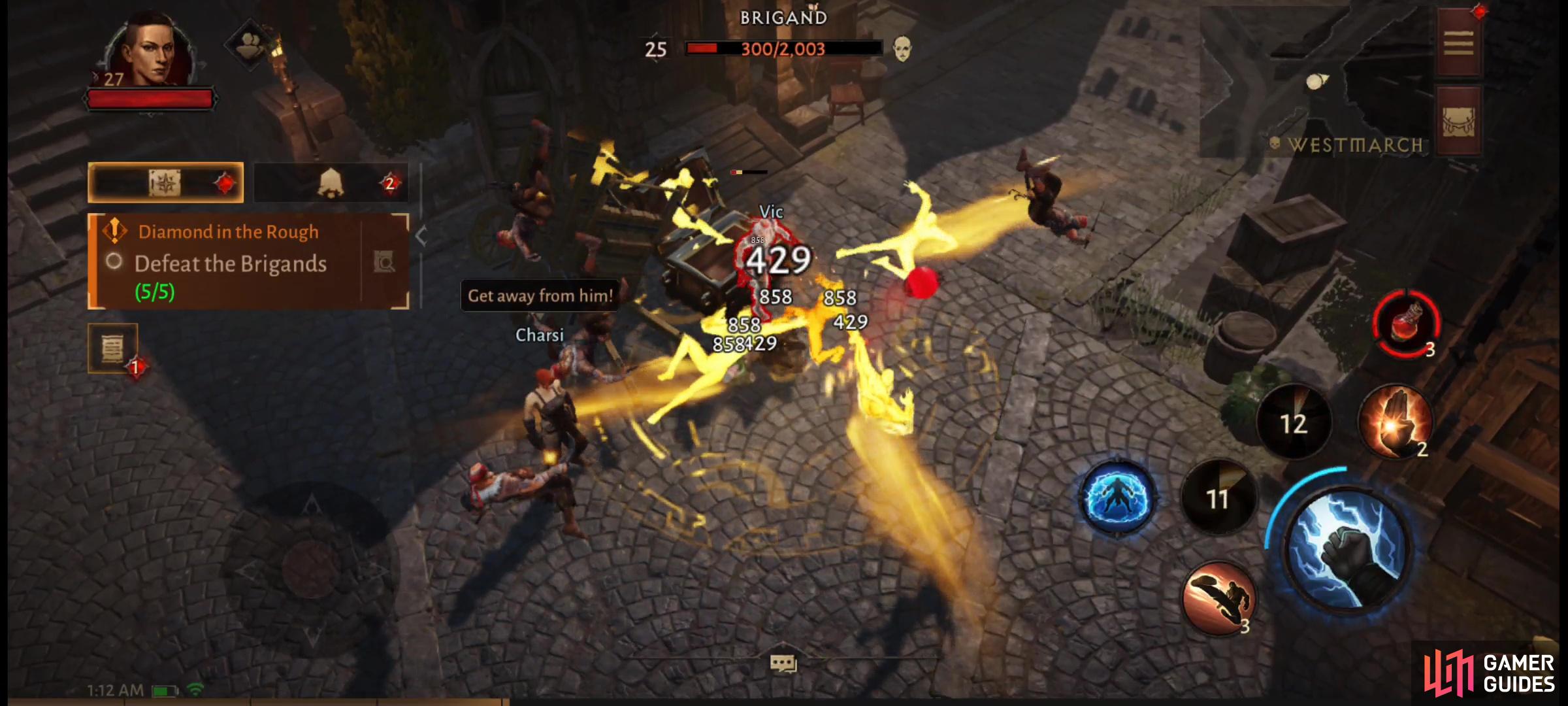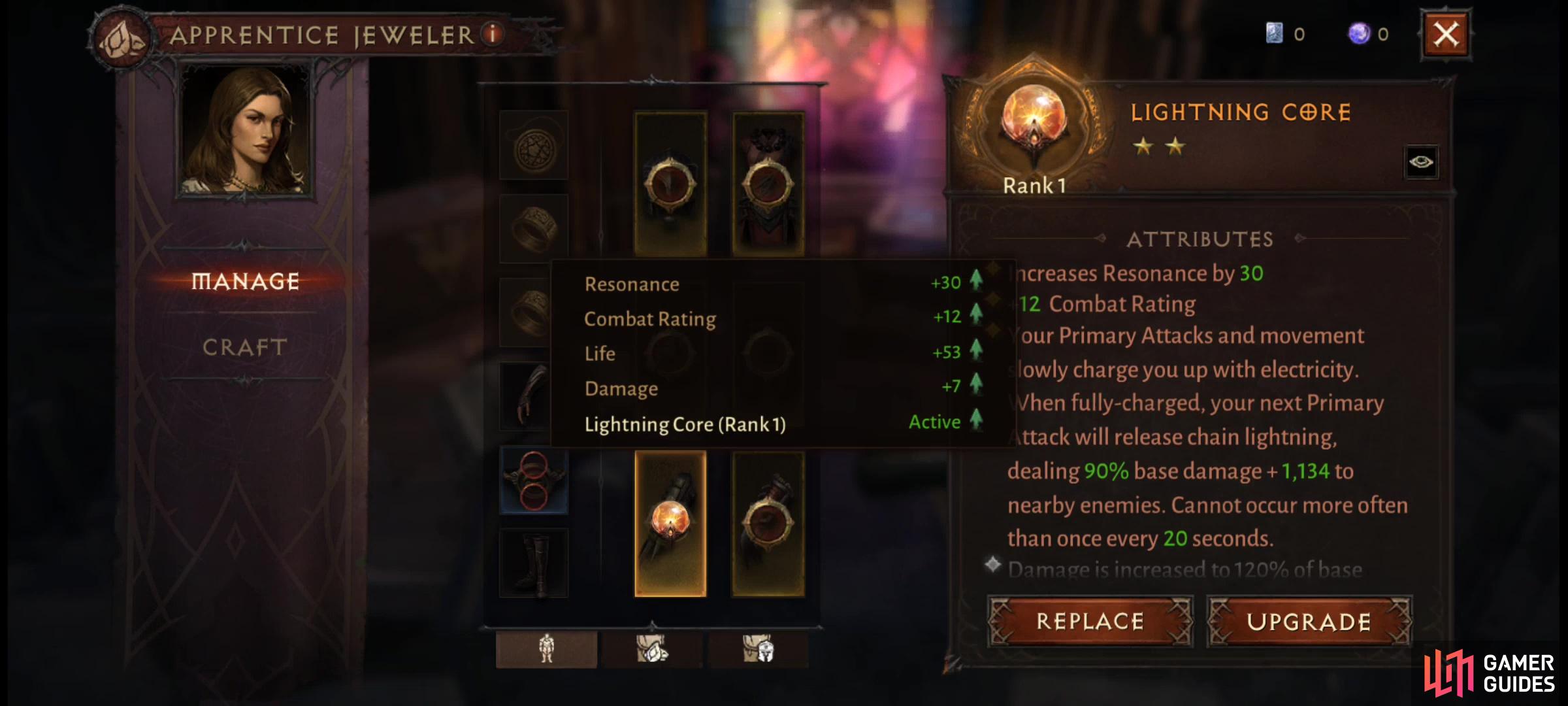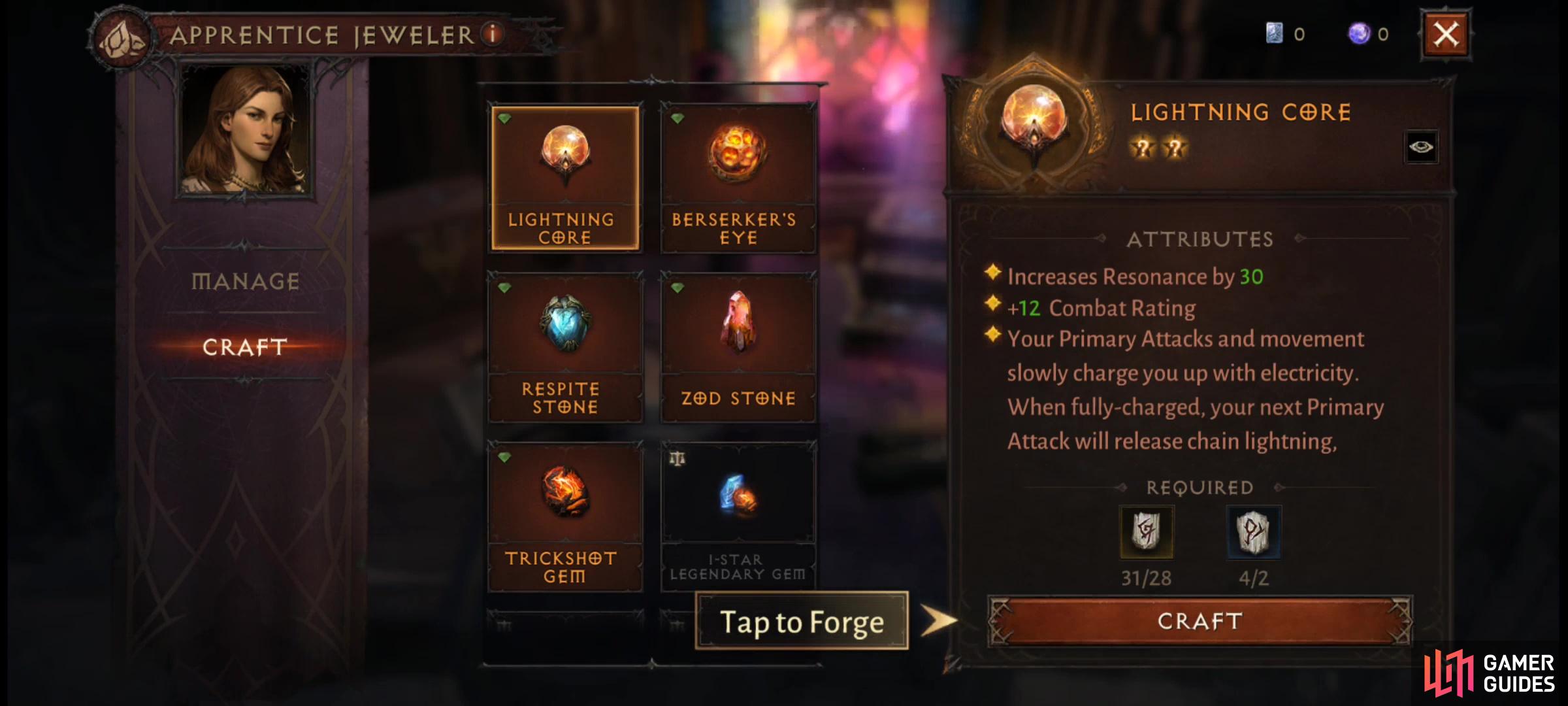Information about the Jeweler in Diablo Immortal, including how to unlock the Jeweler and details about the services the Jeweler provides.
To unlock the Jeweler you’ll need to progress the main story until you reach the “Diamond in the Rough” objective, at which point you’ll need to help out Vic.
How to Unlock the Jeweler¶
You’ll find Jewelers in camps, settlements, safe havens and other bastions of civilization throughout Sanctuary long before you actually have any need of one. In fact, you’ll almost certainly obtain socketed gear a good bit before you actually find anything powerful and shiny to fill said sockets.
To be able to make use of a Jeweler’s services you’ll need both a gem of some sort, and an item with sockets you can adorn with said gem, and the gem will certainly come after the socketed gear (most magic-grade equipment possesses at least one socket, and it’s almost a certainty with rare items). To get a gem you’ll need to progress the main questline until you encounter Lethes following the [Mad King’s Breach] dungeon. After that you’ll make your way to Westmarch, where you’ll have to complete the main quest objectives “Legends of Eld” and “Braving the Rift” (both of which are part of the game’s [Elder Rift tutorial]).
Once done you’ll need to see to the “Bounties Abroad” objective (the game’s [Bounty tutorial]), following which you’ll start the “Diamond in the Rough” main quest objective. Help a Jeweler named Vic out and escort him to his shop, after which you’ll finally be able to make use of a Jeweler’s services… although at this point your interaction will largely be limited to socketing the gem you found during the Elder Rift Tutorial. Still, what works for your first gem holds true for subsequent gems.
Subsequently you’ll be able to visit other Jewelers in the game who can “Manage” your gem loadout and “Craft” gems for you.
Normal Gems and Legendary Gems¶
It’s worth noting that there are two types of gems in Diablo Immortal: Normal Gems and Legendary Gems. The former can be socketed into Secondary Gear (amulets, rings, gloves, belts and boots) while the latter can be socketed into Primary Gear (helmet, chest armor, shoulders, legs, and a main hand and off hand). Normal Gems provide stat bonuses when socketed into gear, and the sockets on the gear are color coded and you must pair the correct Normal Gem with the correct socket color; Rubies and Tourmalines can be socketed into red sockets, Aquamarines and Sapphires can be socketed into blue sockets, and Citrines and Topazes can be socketed into yellow sockets. Legendary Gems, on the other hand, have a unique series of effects and only one of each type of Legendary Gem can be equipped at a time, but they can be socketed into any piece of Primary Gear.
More information about Gems can be found on the pages [What Are Normal Gems?] and [What are Legendary Gems]?
After dealing with Vic you’ll be able to socket the Legendary Gem you found during “Braving the Rift”.
Managing Gems¶
“Manage” is a rather vague term that does a bit of work in the case of a Jeweler’s services in Diablo Immortal, and it includes socketing, removing and upgrading gems. Socketing and removing gems are pretty self-explanatory functions, allowing you to add or remove gems from socketed equipment you own. Gems can be socketed and removed from equipment free of charge. In fact, you don’t really even need a Jeweler to insert gems in new gear, as you’ll be prompted to transfer gems into new gear when you equip it.
Upgrading is a bit more involved, and the process varies a bit depending on whether you’re upgrading Normal Gems or Legendary Gems.
(1 of 2) Cannibalize Legendary Gems to generate Gem Power,
Cannibalize Legendary Gems to generate Gem Power, (left), which can be expended to rank up other Legendary Gems. (right)
For Legendary Gems, you can increase their rank by cannibalizing other Legendary Gems, which will provide an amount of Gem Power based on the consumed Legendary Gem’s Star Count. The exact type of Legendary Gem consumed doesn’t matter during early rank ups, and any excess Gem Power will be stored as Gem Fragments (one Gem Fragment = one Gem Power). The higher a Legendary Gem’s rank and Star Count, the more Gem Power it’ll take, and more and earlier it’ll start requiring duplicate Legendary Gems to craft. I.e., a Lightning Core Legendary Gem will require the sacrifice of another Lightning Core Legendary Gem to upgrade. Since you can’t equip multiple copies of the same type of Legendary Gem, this is less painful than it may otherwise sound.
Normal Gems are less obtuse, and they start out using the tried-and-true Diablo 2 gem upgrading formula: three gems of the same type combine to a higher rank gem. For example, combine three Rank 1 Tourmaline gems and you’ll get a Rank 2 Tourmaline gem, smash together three Rank 2 Tourmaline gems and you’ll get a Rank 3 Tourmaline gem. From Rank 6 on you’ll need to introduce Echo Crystals as a secondary catalyst, because that premium currency isn’t going to sell itself!
You can expend Runes (and in some cases, premium currency) to craft more Legendary Gems.
Crafting Gems¶
There’s a variety of ways to obtain gems, one of which is to visit the Jeweler and pick the “Craft” option. Only Legendary Gems can be created this way, and crafting Legendary Gems requires Runes, which can drop when you complete Elder Rifts. Different gem crafting recipes require different Runes of varying rarity. Specific 1-Star and 2-Star gems can be directly crafted, but if you want a shot at up to 5-Star gems you’ll need to use the “Random Legendary Gem” formula.






 Sign up
Sign up
No Comments